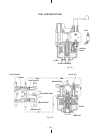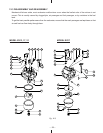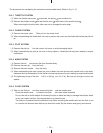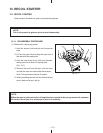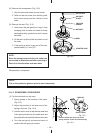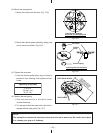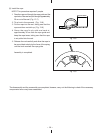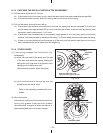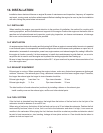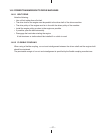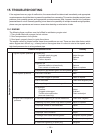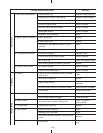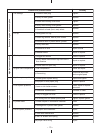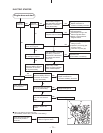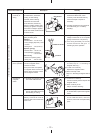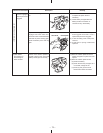
-
66
-
14. INSTALLATION
Installation has a decisive influence on engine life, ease of maintenance and inspection, frequency of inspection
and repair, running costs and other related aspects. Before installing the engine, be sure to plan the installation
with care, taking the points below into account.
14-1 INSTALLING
When installing the engine, pay special attention to the position of installation, the method for coupling with
working equipment, and the foundations and supports for the engine. Position the engine so that tasks such as
gasoline and oil replenishment and inspection, spark plug inspection, air cleaner maintenance, oil drainage
and so on can be carried out as easily as possible.
14-2 VENTILATION
An engine requires fresh air for cooling and for burning fuel. When an engine is covered with a bonnet or is operated
in an enclosed space, the temperature around the engine rises and this causes such problems as vapor lock, oil
deterioration, increased oil consumption, power loss, engine seizure, and reduced engine life, making it difficult for
the engine to function normally. It is thus necessary to install ducts and dampers to guide fresh air, so as not to
recycle the hot air used to cool the engine and to prevent the working equipment from heating up.
Be sure to keep the engine room temperature below 50 C all year round and to prevent the accumulation of hot
air in the engine room.
14-3 EXHAUST EQUIPMENT
Exhaust gas is noxious. When operating the engine indoors, make sure that exhaust gases are discharged
outdoors. However, if the exhaust pipe is long, resistance increases and this lowers engine output. Therefore,
the longer the exhaust pipe the larger its inner diameter should be.
Exhaust pipe length: Less than 3 m Pipe inner diameter: 30 mm
Exhaust pipe length: 3 - 5 m Pipe inner diameter: 33 mm
The ideal solution is forced exhaustion (outdoors) by installing a blower on the exhaust pipe.
Install a safety cover on the exhaust pipe, muffler and other related parts.
14-4 FUEL SYSTEM
If the fuel tank is detached from the engine, the height from the bottom of the fuel tank to the fuel joint of the
carburetor should be between 5 cm and 50 cm.
When using a fuel pump, the bottom of the fuel tank can be up to 20 cm below the carburetor. Position the fuel
tank carefully because, when it is low, fuel is not fed to the carburetor and when it is high, it can cause an
overflow in the carburetor. When piping the fuel, the hose should be as short as possible and attention should
be paid to heat transmission, size, bending, leakage at hose joints and so on. Care should also be taken to
prevent air lock and vapor lock.



